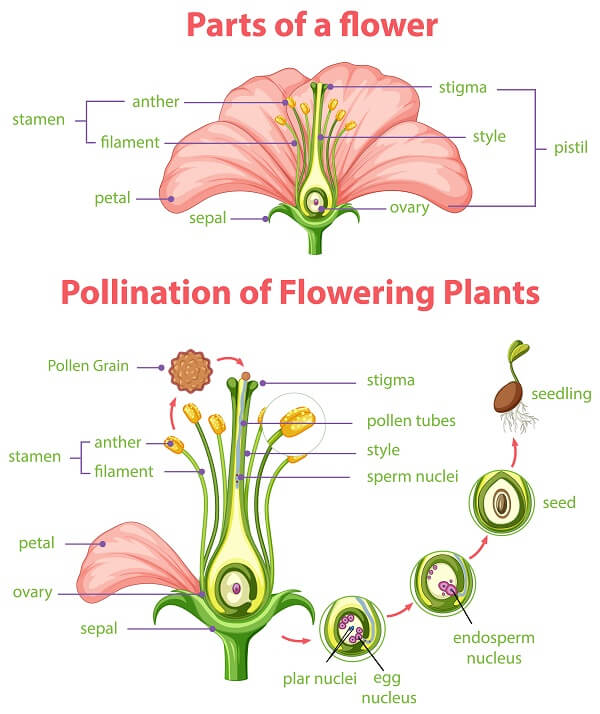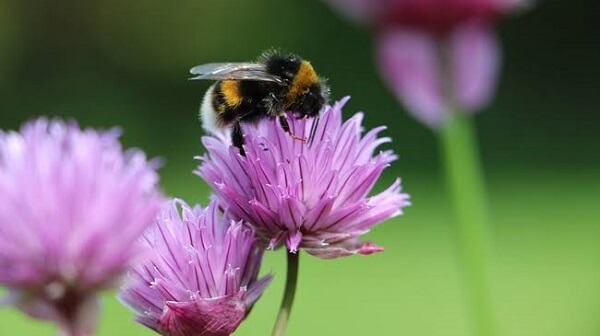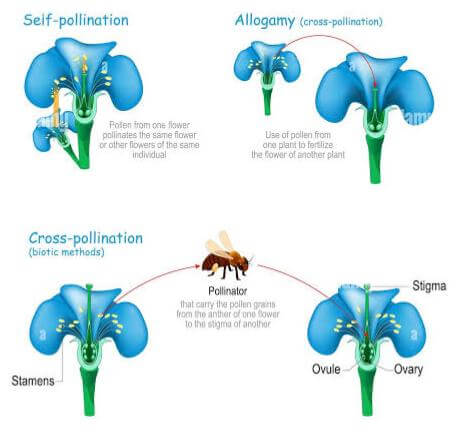Advantages and Disadvantages of Cross-PollinationPollination is the process used in plant reproduction. Two main types of this process are cross-pollination and self-pollination, and each of these types has subcategories that we will go over in deeper detail. Pollen grains are the source of the word "Pollination." 
The tiny single-cell structures known as pollen grains contain the male reproductive cell of plants. Pollen is also known as male gametes or sperm cells of the plant. Pollination occurs when pollen grains from the plant's male (anther) component are transported to the female (stamina). Process of PollinationThe pollination process starts when pollen grains from the corresponding flowers settle on the stigma and join with the style length to form a pollen tube that links the stigma and ovary. The pollen grain begins transporting sperm cells from the grain to the ovary when the pollen tube has been fully formed. When the sperm cells reach the ovary and egg cells, plant fertilization will begin. Using the pollination process, the seed is then dispersed from the parent plant, enabling it to develop into a plant and carry on the reproductive cycle. 
Types of PollinationPollination often falls into two categories: cross-pollination or self-pollination. Cross-pollination is more complicated than self-pollination (the primary type of pollination). 1. Self PollinationDuring this procedure, just one flower and one plant are pollinated. When pollen grains from one flower's male parts fall directly onto the stigma of another flower's female part. Self-pollinating plants are those that engage in this process. Peanuts, barley, wheat, rice, and apricot are well-known examples of these plants. Since the egg and sperm of the flower exchange some genetic information, this simple and quick procedure reduces genetic variety. Although self-pollination is a pollination in and of itself, it also falls under other subcategories. Let's examine different self-pollination techniques:
2. Cross-PollinationWhen two flowers from different plants cross-pollinate, the pollen grain from one flower's anther is transported to the stigma of the other flower, complicating the cross-pollination process. Another name for this process of pollination is xenogamy. Pollinating agents are necessary since this pollination is frequently tricky. These pollinators include living things and organic phenomena like wind, animals, and insects. This technique often occurs in vibrant flowers because the bees are attracted to them by their scent. 
Strawberry, Apple, Dandelion, Lavender, and cross-pollinating plants are well-known examples. Animals, birds, wind, insects, water, and other biotic and abiotic agents must act as pollinators throughout the cross-pollination process. 1. Anemophily (Pollination by Wind) Only a limited number of flowers undergo wind pollination and are characterized by having small, odourless, greenish flowers. These flowers don't attract pollinators; therefore, their energy isn't used to generate vibrant petals. This pollination typically occurs when plants lack nectar-producing flowers and other characteristics like prominence. The female reproductive element of a flower, the stigma, is enormous, sticky, and feathered to reach beyond the flower. The male reproductive parts of anemophilous flowers typically produce vast quantities of pollen, and as a result, they are more prone to get pollen. The most practical examples of wind-pollinated plants include grasses, maize, coconut, palm, and all gymnosperms. 2. Zoophily (Pollination by Animals) Animals are crucial for the reproduction of plants, and they support the spread of seeds. An animal changes its location after consuming a plant's fruit, and this movement aids in dispersing the seeds and bringing new plants to new areas. 3. Anthropophily (Artificial Pollination) Humans do artificial pollination on plants. Anthropophily is another name for this process. The artificial pollination technique is carried out by scattering pollen grains over the female flowers if there are any issues with pollination by abiotic or biotic agents. Techniques for hybridization are also applied in this procedure. Mechanisms that Prevent Self-pollinationSelf-pollination can be decreased or prevented by a flower's structure, self-incompatibility, and the order in which the stamens and pistils of the same flower or plant mature. The consequence of cross-pollination can be caused by several factors, the most frequent of which are insects and wind. Wind-pollinated flowers can be identified by their lack of colour, odour, or nectar and their stigmas' arrangement to collect pollen from the wind. Flowers pollinated by animals are distinguished by their form, colour, or capacity to generate smell or nectar, which developed simultaneously with pollinators. 
Cross-Pollination StrategiesBecause it involves the transfer of pollen from one flower to another, cross-pollination is more complex than self-pollination. Flowering plants use various methods to transfer pollen from one flower to another, involving wind, water, and animal pollinators. Pollen is frequently carried over significant distances by wind. Pollen grains from plants that rely on wind for pollination are often tiny, light, and smooth. Large populations of these plants are also frequently seen because they enhance the likelihood that a pollen grain will fall onto a flower of the same species. Some plants use water to move their pollen to other flowers; however, this strategy is uncommon. Pollen can be transported via waterways such as streams or by using rainwater. By observing the behaviour of animal pollinators, pollination may be directly witnessed. Animals that go from flower to flower and spread pollen to each one they encounter are called pollinators. This type of pollination is essential since about 80% of all flowering plants and 75% of plants used to produce staple crops require the support of animals to accomplish the pollination process. Bees, beetles, birds, flies, moths, bats, butterflies, and other common animals that you might have observed flying from flower to flower are examples of pollinators. Some more prominent animal pollinators, such as Madagascar's ruffed lemurs and Australia's honey possums, despite their rare commodity. 
Advantages of Cross-pollination
Disadvantages of Cross-pollination
|
 For Videos Join Our Youtube Channel: Join Now
For Videos Join Our Youtube Channel: Join Now
Feedback
- Send your Feedback to [email protected]
Help Others, Please Share









